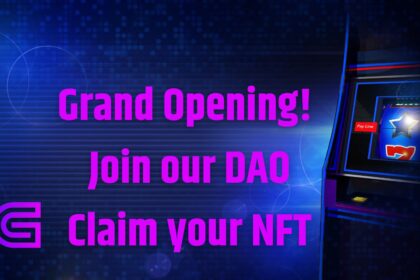Over the last couple of years, the blockchain realm has witnessed the advent of a new technological concept — namely, ‘gamification.’ To put it simply, the idea applies game-design elements and principles to non-game contexts. As a result, it serves as a creative solution to the misaligned incentives plaguing the nascent Web3 industry today.
By making use of video game mechanics (such as challenges, rewards, and social interactions) that most people are accustomed to using, gamification allows blockchain platforms to transform many of their internal UI/UX processes, making them exciting and engaging for users.
That said, as the Web3 market has continued to expand in recent years — with reports evaluating it at $229.15 billion by 2034 — it faces significant challenges related to adoption and retention. In this context, gamification is the perfect tool to reshape how individuals interact with digital technology, especially the blockchain.
The adoption conundrum
The Web3 market, while undoubtedly innovative and revolutionary in many ways, has struggled with user adoption due to its inherent complexity. Many potential users find themselves overwhelmed by the technical jargon and intricate processes involved in everyday blockchain interactions — forming a substantial barrier to entry, at least for new entrants.
Moreover, the misalignment of incentives is another persistent issue pervading the blockchain sector as seasoned, tech-savvy users often tend to engage in exploitative behaviors, such as creating multiple accounts to maximize rewards, undermining genuine participation and value creation.
Similarly, many popular projects have failed to offer incentives that resonate with the diverse motivations of their users, leading to disengagement among high-value clients and fragmentation of the ecosystem.
Amidst all this, one project that has stepped up to the mantle and is trying to offer an entirely new approach to Web3 gamification is Zignaly. Unlike traditional testnets that offer repetitive quests and actions, ZIGChain — in collaboration with Octalysis, a leader in human-focused design — has formulated a gamified experience that is not only functional but genuinely fun and engaging.
Dubbed ‘the Wealth Generation Quest,’ phase one is now live.
That said, what sets ZIGChain apart is its focus on building a strong, purpose-driven community. Rather than simply aiming for high user acquisition numbers or short-term gains through airdrops and staking rewards, Zignaly has seeded a culture of long-term engagement among its users.
Talking about Octalysis, founded by Yu kai Chow, they have a track record of impressive achievements across different industries, including a 46% increase in bank recurring profits for a major Brazilian bank and a 712% uplift in sales for a well-known hotel chain.
Moreover, Joris Beerda, co-founder & CEO of the Octalysis Group, will be lending his expertise for this gamification exercise. He has previously worked with industry giants like Tesla, Uber, and Ethereum, and his experience stands to be instrumental in shaping ZIGChain’s approach to maximizing user engagement.
Is the next stage of blockchain interactions here?
From the outside looking in, the role ‘gamification’ stands to play in driving Web3 usage globally cannot be overstated. Within this broader context, Zignaly’s innovative approach can lay the groundwork that makes blockchain tech accessible, enjoyable, and meaningful for everyone. Interesting times ahead, to say the least!








